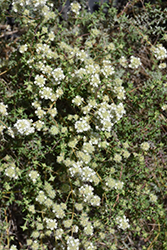It's all about ...
plants

Height: 12 inches
Spacing: 18 inches
Sunlight:
![]()
Hardiness Zone: (annual)
Other Names: White Thyme
Description:
Mainly used in the cultivation of its essential oil, this variety produces aromatic and edible leaves, great for cooking fresh or dried for seasonings; thin, green leaves are accompanied by white flowers; looks great in patio containers or herb gardens
Edible Qualities
Spanish Thyme is an annual herb that is commonly grown for its edible qualities, although it does have ornamental merits as well. The tiny fragrant pointy dark green leaves can be harvested at any time in the season. The leaves have a savory taste and a pleasant fragrance.
The leaves are most often used in the following ways:
- Eating When Cooked/Prepared
- Cooking
- Baking
- Drying
- Seasoning
Planting & Growing
Spanish Thyme will grow to be about 12 inches tall at maturity, with a spread of 18 inches. When grown in masses or used as a bedding plant, individual plants should be spaced approximately 18 inches apart. Its foliage tends to remain dense right to the ground, not requiring facer plants in front. Although it's not a true annual, this fast-growing plant can be expected to behave as an annual in our climate if left outdoors over the winter, usually needing replacement the following year. As such, gardeners should take into consideration that it will perform differently than it would in its native habitat.
This plant is quite ornamental as well as edible, and is as much at home in a landscape or flower garden as it is in a designated herb garden. It should only be grown in full sunlight. It prefers to grow in average to dry locations, and dislikes excessive moisture. It is considered to be drought-tolerant, and thus makes an ideal choice for a low-water garden or xeriscape application. This plant should not require much in the way of fertilizing once established, although it may appreciate a shot of general-purpose fertilizer from time to time early in the growing season. It is not particular as to soil type or pH. It is highly tolerant of urban pollution and will even thrive in inner city environments. Consider applying a thick mulch around the root zone in winter to protect it in exposed locations or colder microclimates. This species is not originally from North America. It can be propagated by division.
